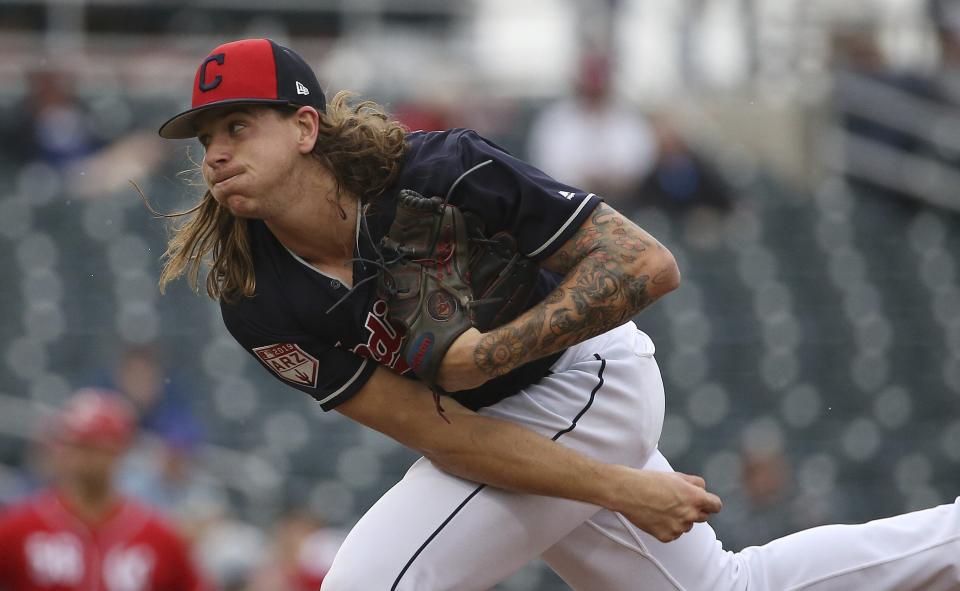Drop or keep: Ten tips on making tough fantasy roster decisions in April
April roster decisions are generally the hardest of the season. On one hand, the biggest busts are typically disappointments right from the outset of the campaign. But on the other hand, many players emerge from slow starts to be productive assets the rest of the way.
While there is no sure-fire way to determine which struggling players to drop during April, those who check off most boxes on this list are generally the ones to retain.
1. He isn’t old.
I have a hard time putting an age on “old” but obviously the older he is, the less he gets the benefit of the doubt. Generally, players 35 or older should get a very short rope while those from 31-34 can be dropped if signs of their decline were looming in recent seasons.
2. He has done it before.
Players who have enjoyed at least one productive season should get the benefit of the doubt over those who are trying to establish themselves as Major Leaguers. By the end of April, it’s fair to admit that you jumped the gun with your optimism for a certain unproven prospect.
[Join or create a 2019 Yahoo Fantasy Football league for free today]
3. He was selected during initial 70% of the draft.
The 70% mark is obviously not an absolute figure, but it gives a pretty good indicator of the value a player held in your eyes during March. I’m very careful to not drop a player who I selected during the first half of my draft, and I will usually keep those in the 50-70% range of the draft whenever possible. This means roughly the first 20 picks on 30-man rosters and the initial 17 selections on 25-man clubs.
4. His team isn’t hot garbage.
Players generally have an easier time turning their season around when they have a little help from their friends. Players on weaker clubs will need to get especially hot in order to produce anything more than replacement-level stats, while those in juggernaut offenses can collect plenty of counting stats simply by returning to normal.
5. He’s healthy.
In general, non-stars who are currently on the DL should be shipped to waivers. To loop back to point No. 3, I would keep an injured player who was selected during the first half of my draft and is projected to return during May. Anyone selected after the midpoint and expected to miss more than a couple weeks is likely heading to waivers. Players such as Mike Clevinger present the hardest decisions, as their draft investment was high and they are expected to miss plenty of time.

6. His role remains unchanged.
Position players who have lost their everyday role or favorable lineup spot are prone to being dropped. The same goes for starters who have surrendered their rotation spots or relievers who are now without a high-leverage role. But those who are in no danger of being replaced by their actual clubs can be given the same long rope from fantasy owners.
7. His advanced stats are solid.
A couple minutes looking at advanced stats can really put a slow start into perspective. For example, owners should look at a hitter’s changes in plate discipline and new batted-ball tendencies. When assessing pitchers, take a look at their average fastball velocity, K:BB ratio and the type of contact that they are mainly giving up. Looking at advanced stats can tell owners whether a player has been bad or unlucky.
8. He has a specialty.
Some players are more replaceable than others. For example, a projected 40-steal player deserves patience during an early season slump, as his owners can’t find a speedy replacement on waivers. Closers are the other case of riding out a cold stretch, especially in leagues where all the ninth-inning relievers and quality setup men are rostered. But starting pitchers and hitters who don’t dominate a specific category can be waived.
9. You saw this as a possibility.
Let’s be honest — you knew some of your picks were risky on draft day. Rookies, players coming off surgery and veterans who are known to be streaky are the types of picks who really should have come with a bottle of antacid. If you nabbed one of these players, you need to be patient during their April cold stretches. You saw the major rewards that came with the risk, and you drafted the player for a reason. This is what you signed up for.
10. You believe in him.
The final point is one that can’t be quantified. Out of all the players you drafted, there are surely some that you believed in more than others. If you had a great feeling about a player, be prepared to give him a little more time to break your heart before you cut him loose. But struggling players you were uncertain about on draft day can be shed to the waiver wire as soon as you finish reading this sentence.


